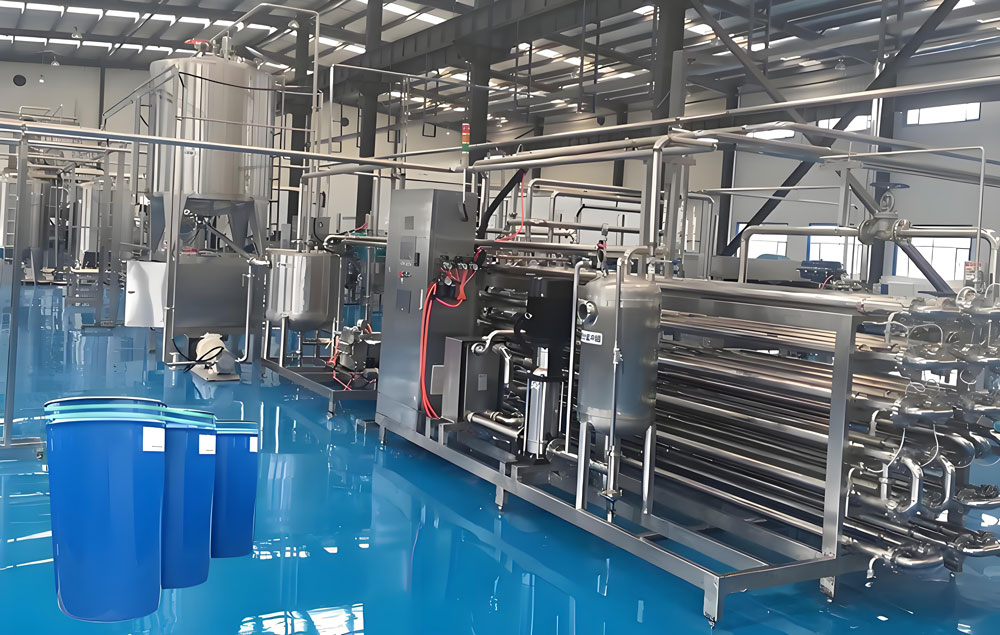How to Improve the Production Efficiency of a Tomato Paste Production Line?

Tomato paste is a popular condiment worldwide, with continuously growing demand. To maintain high product quality while achieving efficient production is a core goal for food processing enterprises. This article will explore how to enhance the efficiency of tomato paste production lines by analyzing equipment optimization, process design, resource management, and cutting-edge technology applications.
1. Equipment Optimization: The Foundation of Efficiency Improvement
1.1 Integration of Automated Equipment
Automated equipment is essential for boosting production efficiency. Examples include:
- Automated Filling Machines: Increase bottling speed and reduce labor costs.
- Automatic Packaging Machines: Ensure efficient sealing and labeling.
- Intelligent Sorting Systems: Detect and sort raw materials to minimize defective products.
1.2 High-Precision Processing Equipment
Utilizing high-precision equipment, such as double-effect evaporators and vacuum concentrators, ensures both quality and productivity are maintained.
1.3 Modular Production Lines
Modular designs allow quick adaptation to varying production requirements, minimizing downtime and enhancing flexibility.
2. Process Optimization: Breaking Production Bottlenecks
2.1 Standardized Raw Material Processing
Efficient raw material processing enhances overall productivity. For example:
- Automated Cleaning Systems: Reduce water usage while improving cleaning efficiency.
- High-Speed Peeling Machines: Increase peeling speed and reduce raw material waste.
- Continuous Sorting Systems: Leverage image recognition for intelligent sorting.
2.2 Continuous Production Mode
Replacing traditional batch processing with continuous operations can significantly reduce idle time. Examples:
- Continuous evaporators maintain consistent output.
- Synchronized filling and sealing processes ensure seamless transitions.
2.3 Optimized Logistics Flow
Designing an efficient factory layout reduces material transportation time. Conveyor systems and automated guided vehicles (AGVs) can streamline material movement across production lines.
3. Intelligent Control: Digital Transformation of Production Lines
3.1 Data-Driven Optimization
Manufacturing Execution Systems (MES) collect and analyze production data in real-time, identifying inefficiencies and enabling precise improvements.
3.2 Predictive Maintenance
Using predictive maintenance systems equipped with sensors to monitor equipment health reduces downtime by addressing potential issues before failures occur.
3.3 IoT (Internet of Things) Applications
IoT technologies enable seamless communication between equipment, improving transparency and collaboration throughout the production process.
4. Energy Efficiency: Supporting Sustainable Production
4.1 Heat Recovery Systems
Recovering heat generated during production can reduce energy consumption by reusing it for raw material preheating or plant heating.
4.2 Water Resource Management
Implementing water recycling systems minimizes water wastage, such as reusing bottle-cleaning water for raw material washing after treatment.
4.3 Renewable Energy Utilization
Integrating solar or wind energy to partially power operations decreases dependence on traditional energy sources and reduces carbon emissions.
5. Personnel Training and Management: The Human Factor in Efficiency
5.1 Skilled Operators
Regular training ensures that workers are familiar with operating procedures and basic troubleshooting, reducing delays caused by human errors.
5.2 Incentive Mechanisms
Implementing performance-based incentives motivates employees to identify and execute efficiency-enhancing initiatives.
5.3 Shift Management Optimization
Strategic scheduling prevents worker fatigue, minimizing accidents and maintaining high productivity levels.
6. Case Studies: Successful Efficiency Improvements
6.1 Domestic Enterprise Case Study
A Chinese food processing company upgraded its production line, achieving an 85% automation rate and increasing productivity by 40%.
6.2 International Best Practices
An international food giant adopted a fully digital management platform, streamlining every step from raw material procurement to product delivery, significantly reducing costs.
7. Future Trends: Innovations Driving Production Evolution
7.1 Industry 4.0 Integration
Artificial intelligence and machine learning technologies are poised to revolutionize production by enabling fully autonomous operations.
7.2 Customizable Production
Flexible production lines tailored to market demands will support rapid adjustments for diverse product portfolios.
7.3 Advanced Packaging Materials
Developing eco-friendly packaging materials, such as biodegradable films, not only increases efficiency but also aligns with sustainability goals.
8. Conclusion: Comprehensive Strategies for Efficiency Enhancement
Boosting the efficiency of tomato paste production lines requires a multi-dimensional approach that includes equipment upgrades, process improvements, intelligent control systems, sustainable practices, and workforce management. By adopting these strategies, enterprises can meet market demands while maximizing profitability. Looking ahead, technological advancements and sustainable development principles will further elevate the potential for efficiency improvements in the tomato paste industry.
Must-Read Blogs For Chain Restaurants Owner











 Tomato Paste Production Line
Tomato Paste Production Line Cold Chain Rice Production Line
Cold Chain Rice Production Line Unmanned Intelligent Rice Production Line
Unmanned Intelligent Rice Production Line
Ready to Get Started?